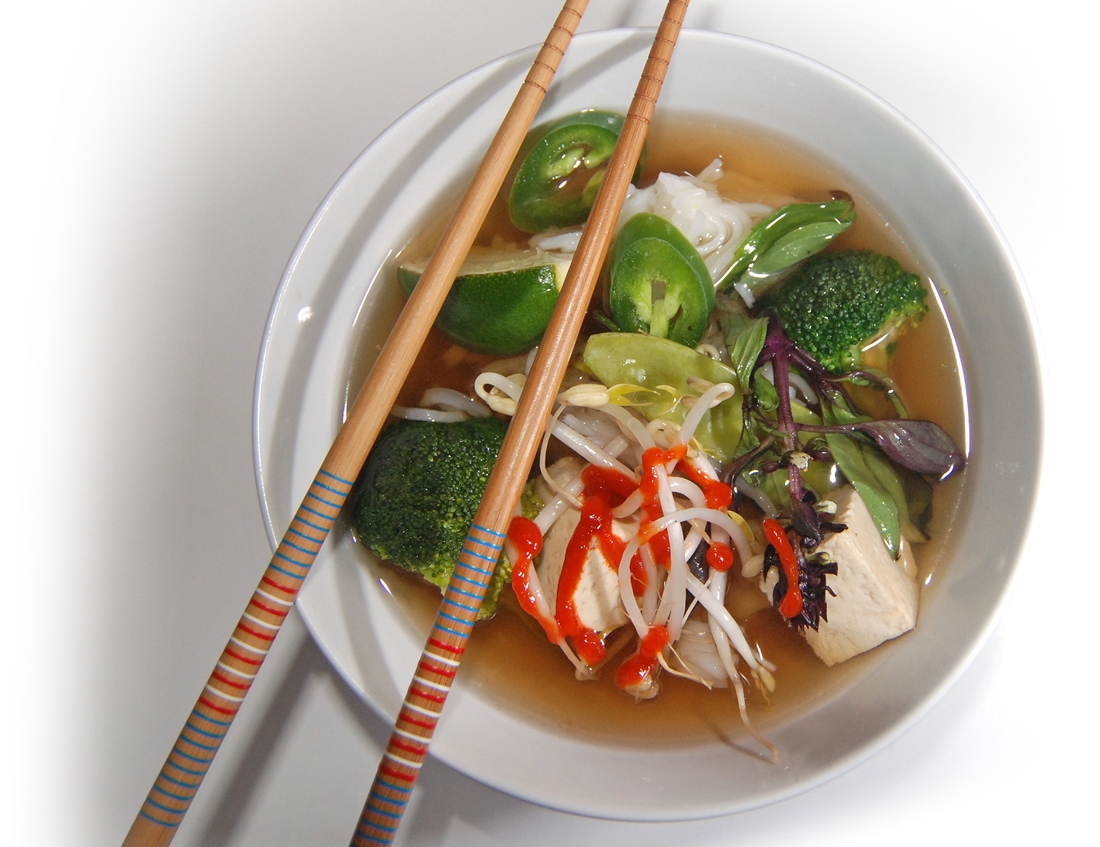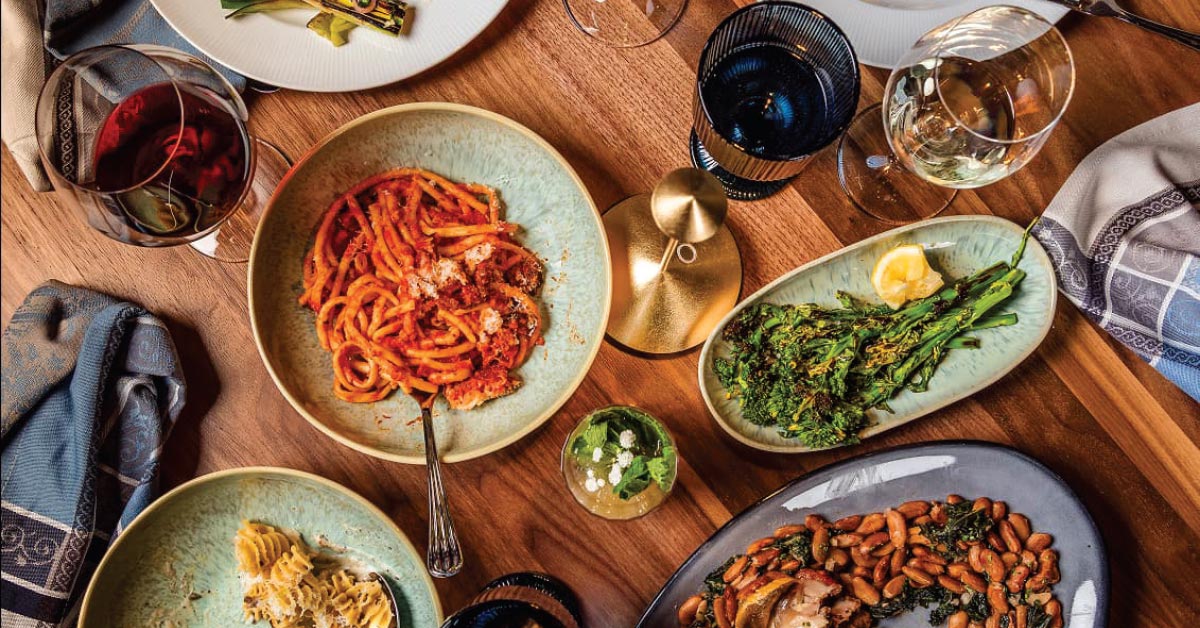Pho, it seems, is having a moment.
If you’re new to the dish — a traditional Vietnamese offering of noodles, broth, meat and various herbs and vegetables — welcome! You’ve got a bit of catching up to do, but the journey is going to be delicious.
Pho isn’t quite soup and it isn’t quite stew. It’s unique unto itself, perhaps appearing simple to a newcomer. But in reality, it presents a complex interaction of flavors. Typical pho consists of beef, very thin rice noodles and a carefully concocted, piping-hot broth, in which the noodles and rare meat cook as they’re served. It usually comes with a pile of supplements such as basil, bean sprouts or jalapeno peppers.
While it now fills the menus of upscale restaurants in bigger cities, pho is very much a traditional street food, often served in the morning to (possibly hungover) early risers in bowls small enough to cup with both hands. The good news in West Michigan is that, for the most part, pho has yet to be absorbed into the trendy food scene and is available fairly inexpensively if you know where to look.
The best starting point is southeast Grand Rapids, where there is a mild rivalry among pho enthusiasts (if not the restaurants themselves) over which family-owned place is better — Pho Soc Trang or Pho Anh Trang. It’s not quite American Coney Island versus Lafayette Coney Island in Detroit, but you’ll hear passionate enough arguments on the merits of either restaurant that both warrant a visit.
But first: When your pho arrives, it is extremely important to spend a few minutes interacting with the broth. Resist the American impulse to immediately dump a bunch of sauces and seasonings into the bowl. Have a few spoonfuls — savor its richness, its interplay of sweetness and sourness, its aroma — before getting all silly with the condiments, or even before adding herbs, sprouts or peppers.
The broth at Pho Anh Trang — obscurely located at 3633 Eastern Ave. SE, near 36th St. — is sweet and rich, and tastes like it’s as old as time. It depends, of course, on what’s in your bowl, and here is where I cop to being minimally-qualified to judge traditional pho, since I’m a non-consumer of land-animal flesh and order vegetarian whenever possible. (Most places nowadays will accommodate this.) But every meat-eating companion at Pho Anh Trang, upon sipping the broth, stares into the distance for a moment, as if transported somewhere mystical.
Pho Anh Trang’s vegetarian pho — pho chay, priced at an unbeatable $4.50 during lunch hours — contains tofu, sliced mushrooms, onion, vermicelli noodles and a variety of herbs. At Pho Soc Trang, the pho chay ($8.25) contains a different cocktail of leafy vegetables and larger tofu pieces that are sliced like flank steak, their outer edges gently fried in a manner I found more texturally appealing, but the dishes ultimately are so similar that a lay-person isn’t likely to form a strong preference. It’s a great excuse for repeat visits.
Pho Soc Trang — located in the Golden Bridge Plaza at 4242 S. Division Ave. — offers about 15 beef pho options with various combinations of brisket, tendon and tripe. My guest at a recent lunch visit feasted on the pho bo kho ($8.95), beef with rice noodles, a great entry-level option.
Another good place to start is Lai Thai Kitchen, 1621 Leonard St. NW, where a recent dining excursion with friends produced endorsements ranging from tepid to enthusiastic. Another vegetarian and I ordered the pho chay ($7.95), a smaller portion than we received at other restaurants, but whose density of noodles and vegetables compensated for a somewhat more generic broth. The omnivores in the group ordered pho steak and chicken ($8.25) and pho steak ($8.50) and seemed as enamored with the cozy, unassuming confines of the dining room as with the pho itself.
There are other stops on this journey. Golden 28, 627 28th St. SW, has a devoted following. Bangkok Taste, 15 Jefferson Ave. SE, a downtown Thai restaurant, offers good seafood and beef phos. Go forth!
You might be wondering by now whether the correct pronunciation is “foe” or “fuh.” Conventional wisdom points to “fuh” as correct, but there is some slight nuance depending on if the dish originated in the northern or southern part of Vietnam. Do your best, but even if you don’t nail the dialect, pho restaurants will still let you in.





